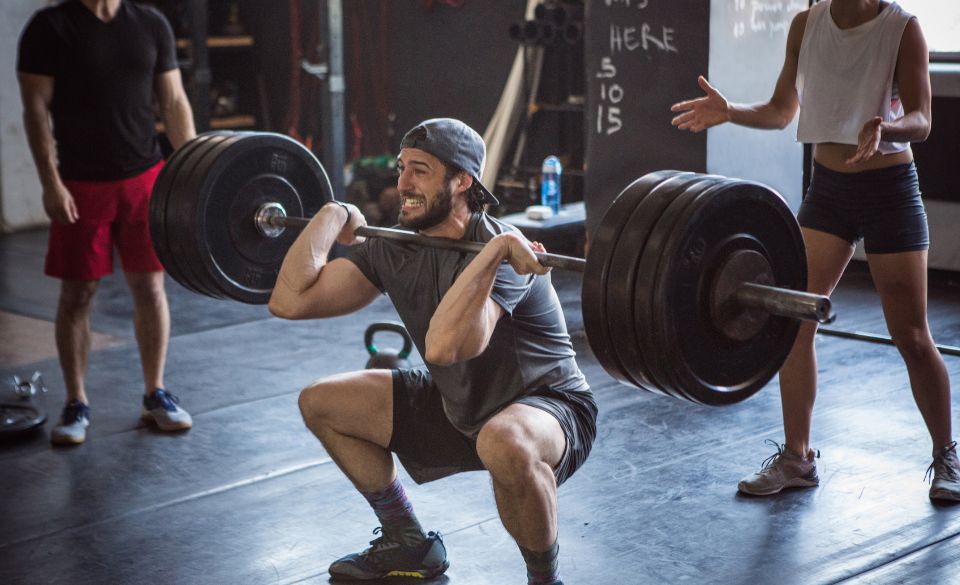
Building Muscle vs. Burning Fat: How Weightlifting Can Help Body Composition Goals
Page Contents
- The Basics of Body Composition: Muscle, Fat, and Beyond
- The Power of Weightlifting: Muscle Growth and Metabolism Boost
- The Fat-Burning Benefits of Weightlifting: EPOC and Beyond
- Combining Weightlifting and Nutrition: Fueling Your Body for Success
- The Importance of Progressive Overload: Pushing Your Limits
- Balancing Cardiovascular Exercise: Supporting Fat Loss
- The Role of Genetics and Individual Variations
- Consulting with Professionals: Personalized Guidance
- Conclusion
Are you torn between building muscle and burning fat? Many individuals strive for a desirable body composition that combines lean muscle mass with reduced body fat. The good news is that weightlifting can be a powerful tool to help you achieve these goals. In this article, we’ll delve into the relationship between weightlifting, muscle growth, fat loss, and how it can contribute to your body composition goals. So, let’s dive in and uncover the science behind weightlifting’s impact on building muscle and burning fat!
The Basics of Body Composition: Muscle, Fat, and Beyond
Before we explore weightlifting’s role in body composition, let’s understand the basics. Body composition refers to the proportion of muscle, fat, bones, and other tissues that make up your body. Achieving an optimal body composition involves increasing muscle mass while reducing body fat levels.
When it comes to muscle and fat, they are distinct entities with different functions. Muscle is metabolically active tissue that plays a crucial role in movement, strength, and calorie burning. Fat, on the other hand, serves as an energy reserve and insulation for the body.
The Power of Weightlifting: Muscle Growth and Metabolism Boost
Weightlifting is renowned for its ability to promote muscle growth, also known as muscle hypertrophy. Resistance training, such as lifting weights, places stress on your muscles, leading to microscopic tears. In response, your body initiates the repair process, which involves building new muscle fibers and increasing muscle protein synthesis.
Studies have consistently shown the positive impact of weightlifting on muscle growth. A study published in the Journal of Applied Physiology demonstrated that resistance training promotes muscle hypertrophy, regardless of age or gender. Additionally, a review published in the Journal of Strength and Conditioning Research highlighted the significant increases in muscle mass observed with resistance training interventions.
Increased muscle mass is not just about aesthetics; it also plays a vital role in burning calories and boosting metabolism. Muscle tissue is metabolically active, meaning it requires energy to function. By increasing your muscle mass through weightlifting, you can elevate your resting metabolic rate, leading to more calories burned even at rest.
The Fat-Burning Benefits of Weightlifting: EPOC and Beyond
Weightlifting not only helps build muscle but also contributes to fat loss. One of the mechanisms behind weightlifting’s fat-burning effects is the phenomenon known as Excess Post-Exercise Oxygen Consumption (EPOC). EPOC refers to the increased oxygen consumption and calorie burning that occurs after an intense exercise session.
Intense weightlifting sessions, particularly those involving compound exercises and high-intensity interval training (HIIT), can create a significant EPOC effect. A study published in the International Journal of Sport Nutrition and Exercise Metabolism found that high-intensity resistance training led to a prolonged EPOC, resulting in increased fat oxidation and calorie expenditure after the workout.
Furthermore, weightlifting promotes fat loss by improving insulin sensitivity and hormonal balance. Resistance training helps optimize insulin levels, enhancing the body’s ability to use stored fat for energy. Additionally, weightlifting stimulates the release of growth hormone and testosterone, which play key roles in fat metabolism and muscle development.
Combining Weightlifting and Nutrition: Fueling Your Body for Success
To maximize the benefits of weightlifting on body composition, it’s crucial to pair your training with proper nutrition. Nutrition plays a significant role in providing the necessary fuel for muscle growth and supporting fat loss. Here are some key considerations:
1. Protein Intake: Adequate protein consumption is essential for muscle repair and growth. Aim to consume high-quality protein sources with each meal to provide your body with the building blocks it needs. Studies suggest that a protein intake of around 0.7-1 gram per pound of body weight per day is optimal for muscle building.
2. Caloric Balance: Achieving the right balance between caloric intake and expenditure is crucial for body composition goals. If your goal is to lose body fat, you need to create a calorie deficit. However, be mindful of not drastically cutting calories, as it may hinder muscle growth. Consult with a registered dietitian to determine the appropriate caloric intake for your goals.
3. Macronutrient Distribution: Balancing your macronutrients (protein, carbohydrates, and fats) is essential for overall health and performance. Prioritize nutrient-dense, whole foods while paying attention to portion sizes and macronutrient ratios that align with your goals.
The Importance of Progressive Overload: Pushing Your Limits
To continue progressing towards your body composition goals with weightlifting, it’s important to implement the principle of progressive overload. Progressive overload involves gradually increasing the demands placed on your muscles to stimulate further growth and adaptation.
As your body adapts to your weightlifting routine, it becomes necessary to introduce new challenges to continue making progress. This can be achieved through various methods, such as increasing the weight lifted, performing more repetitions, or adjusting the training volume or intensity.
Studies have shown that incorporating progressive overload in weightlifting leads to greater muscle hypertrophy. A study published in the European Journal of Applied Physiology demonstrated that subjects who progressively increased their training volume experienced significantly greater muscle growth compared to those who maintained a constant training volume.
So, as you embark on your weightlifting journey, remember to push your limits, step outside of your comfort zone, and continuously challenge your muscles to stimulate further growth and enhance your body composition.
Balancing Cardiovascular Exercise: Supporting Fat Loss
While weightlifting is a potent tool for building muscle and boosting metabolism, it’s important to incorporate cardiovascular exercise to support fat loss and overall health. Cardiovascular exercises, such as running, swimming, or cycling, can further increase calorie expenditure and contribute to a calorie deficit, aiding in fat loss.
By combining weightlifting with cardiovascular exercises, you create a well-rounded fitness routine that addresses both muscle growth and fat burning. Aim for a balance between strength training and cardiovascular exercise that suits your goals and preferences.
The Role of Genetics and Individual Variations
It’s crucial to acknowledge that genetics and individual variations play a role in body composition and how the body responds to weightlifting. Some individuals may have a genetic predisposition to build muscle more easily, while others may have a higher tendency to store fat.
Additionally, each person’s body composition goals and desired aesthetic may differ. It’s important to embrace your unique genetic makeup and focus on your own progress rather than comparing yourself to others. Consistency, patience, and a positive mindset are key to achieving long-term success.
Consulting with Professionals: Personalized Guidance
For optimal results and a safe training experience, consider consulting with professionals such as certified personal trainers or registered dietitians. They can provide personalized guidance, assess your specific needs, and tailor a training and nutrition plan to help you achieve your body composition goals.
Additionally, professionals can ensure that you are using proper form and technique during weightlifting exercises, minimizing the risk of injury and maximizing the effectiveness of your workouts.
Conclusion
Weightlifting is a powerful tool that can help you achieve your body composition goals by simultaneously building muscle and burning fat. Through weightlifting, you stimulate muscle growth, increase metabolism, and create an optimal environment for fat loss. The combination of increased muscle mass and reduced body fat leads to a desirable body composition.
Remember, consistency and progressive overload in your weightlifting routine are key to stimulating muscle growth. Additionally, pairing your weightlifting efforts with proper nutrition, including adequate protein intake and a balanced diet, will further enhance your results.
So, embrace the power of weightlifting, challenge your muscles, and watch as your body transforms. Whether your aim is to sculpt a more muscular physique, lose body fat, or achieve a balance between the two, weightlifting can be your ultimate ally in achieving your body composition goals.



